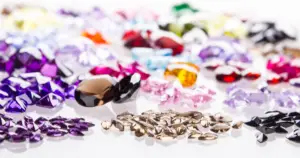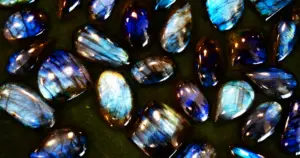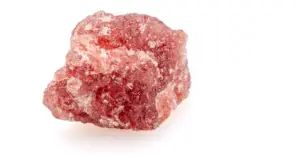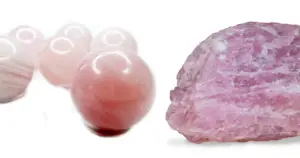How to Tell if Fluorite is Real or Fake in 7 Easy Ways
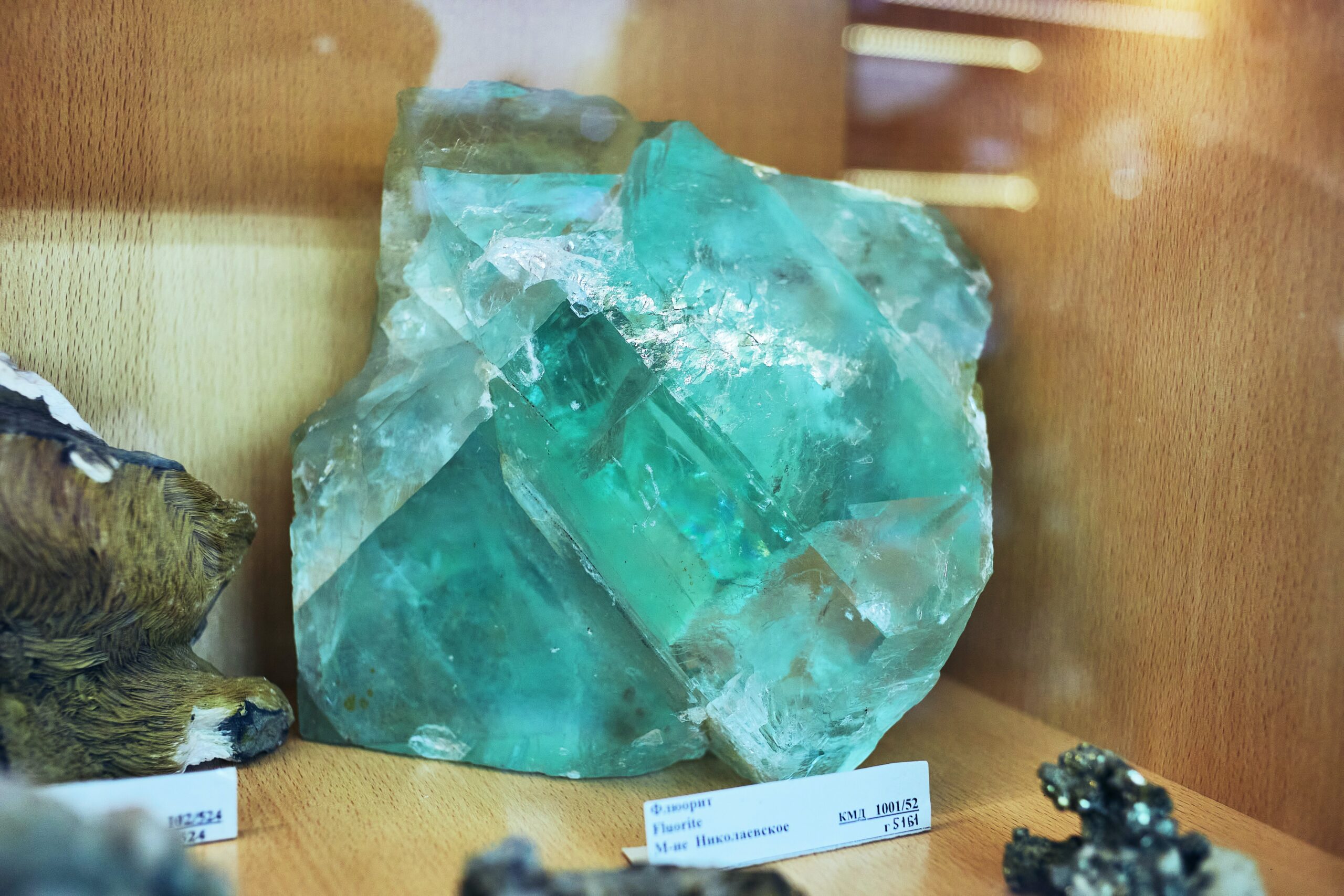
Fluorite is one of the essential nonmetallic industrial minerals of today. Fluorite and Fluorspar are a mainstay for any industrial country, with applications in industries ranging from Teflon, and glass to rubber and steel. In this article let us explore how to identify if a Fluorite is Real or Fake.

Before we begin let us understand a bit regarding a few crucial characteristics of Flourite.
Fluorite and its ore called Fluorspar have always been difficult, if not impossible, to identify when one is out buying these stones.
Even in the lab, Fluorite is quite difficult to identify because of its relatively stable composition and insolubility in most acids.
Its chemical formula, CaF2, shows that Fluorite is composed of calcium and fluorine in almost equal amounts.
Chemically and physically, the composite calcium is relatively easy to identify, while fluorine is very difficult. To make an identification, a combination of criteria is usually necessary.
Read about the exquisite Fluorite Crystal Benefits and its Best Uses here.
Table of Contents
How to Tell if Fluorite is Real or Fake?
Through a bit of reasoning and direct evidence from specific tests, you can arrive at an accurate sense of whether your crystal is real or fake Fluorite.
The most obvious identification method would be by physical properties like hardness, coloration, and luster.
However, if you are a hobbyist and can procure some required chemicals, you can additionally run extra tests to confirm the originality of your crystals.
Understand the Relationship between Coloration and Occurrence
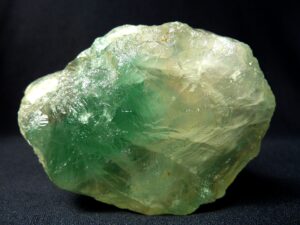
Fluorite’s color is exceedingly variable, the standard colors being colorless and white, also shades of green, blue, purple, and brown. It typically occurs in hydrothermal deposits, sedimentary rocks, hot springs, and rarely in pegmatites.
One way to use the color of the stone being sold to you as a way to establish its originality is to ask your seller for the place of origin of your rock since the color of Fluorite varies across the world.
Here are some common varieties and their place of occurrence:
- Blue John or Derbyshire Spar is a once common, now highly-priced variety of Fluorite that occurs in England and has been used for more than fifteen hundred years as decorative material in vases, carvings, bowls, and so forth.
- It is banded in white and shades of blue, violet, and reddish-brown. These deposits are now nearing extinction, so they are precious as a collectible.
- Missouri offers several purple, blue, yellow, brown, and colorless Fluorite.
- Westmoreland, New Hampshire, is the source of several bright green fluorites in crystals up to 8 inches across, priced higher in the market today.
- Chamonix areas in France and Switzerland are another common source of octahedral pink Fluorite crystals.
- Illinois is best known for violet-colored Fluorite, although many other vibrant colored Fluorites are also mined from here.
How to Utilize Blue Fluorite for Love? – A Brief Guide, Read here.
Check for Hardness
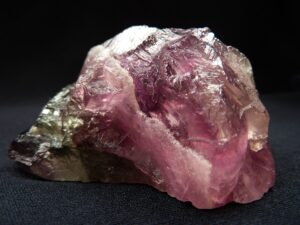
Hardness refers to its resistance to scratching concerning a gemstone.
In a crystal structure, hardness is determined by the bonding that holds atoms together.
An example of this bonding is the ease with which layers of atoms at a surface can be separated by applying pressure to a sample of another material.
If the second material is more complex than the first, it will leave a furrow or scratch, which represents the breaking of millions of atomic bonds on a microscopic scale. The hardness of a gemstone indicates its scratchability.
Fluorite has a rating of 4 on the Mohs scale of hardness, meaning it will scratch a copper penny but will, in turn, be scratched by a pocket knife (which has a hardness of about 5).
The scratch test is an efficient way to identify real Fluorite against common imitations and misidentified minerals like glass or quartz, on the one hand, which have much higher hardness and therefore do not get scratched by a knife, and minerals like gypsum on the other, which is soft enough to get struck by a fingernail.
Observe the Gemstone Cleavage
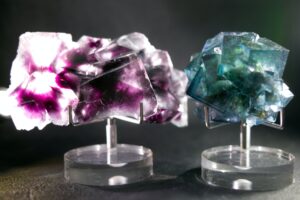
Cleavage and fracture-related properties are manifestations of crystals’ tendency to break along concrete plane surfaces. As in the case of hardness, the underlying principle is that of relative bond strengths.
If there are levels in a crystal structure along which the atomic bonds are relatively weak, the crystal may tend to break along such planes.
Fracture is the way whenever a mineral breaks other than along cleavage directions.
Fluorite possesses perfect octahedral cleavage such that when a real fluorite crystal is lightly tapped, it will split quite readily along its incipient cleavage planes.
However, when struck hard, it will shatter like glass showing a flat, conchoidal (shell-like, distinguished by concentric curved lines) fracture.
Look for the Crystal’s Luster
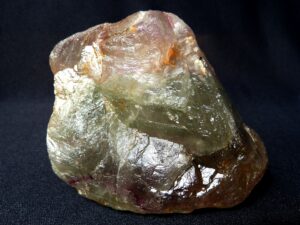
Fluorite’s luster is always vitreous or shiny. One way to check if your crystal is real Fluorite is to sprinkle some water on its surface and observe the way light shines on it. If it appears glass-like, you can be assured of your mineral’s vitreous luster. If identification cannot be made by physical features alone, then tests using its chemical properties must be made.
The following list of tests will usually give an identification when a combination of tests is used.
Very often, Fluorite is confused with or falsely marketed as other naturally occurring minerals.
The most common minerals it is confused with are Calcite, quartz, barite, and gypsum. While the other three can be identified by conducting a hardness test, Calcite poses a challenge of identification because it appears to resemble Fluorite a tad too closely.
Check for the Proof of Chemical Composition
Calcite’s crystallography and cleavage resemble Fluorite, and it is often tough to differentiate between the two solely based on physical properties.
One simple property that makes Calcite easily distinguishable from Fluorite is its effervescence in the cold dilutes hydrochloric acid.
Unfortunately, this test can be potentially destructive if your crystal is not real Fluorite. While real Fluorite remains unaffected by hydrochloric acid, Calcite reacts to produce vigorous bubbles.
Conduct a Flame Test
Due to the involvement of fire, this is destructive but an efficient test of originality.
Fluorite is known to show a distinct luminescence. Real Fluorite gives a reddish-orange flame color when it is heated in a burner flame. This is due entirely to the calcium contained within it.
If heated rapidly, it will burn with a crackle and sometimes show blue or green luminescence when the heating continues.
This is a feature that cannot be imitated and therefore establishes the originality of your Fluorite once and for all, save only at the loss of the substance.
Conduct a Hammer Test
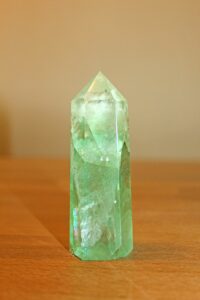
If you are a hobbyist or collector or generally someone with access to tools, you can test for the realness of a Fluorite by conducting a hammer test. This, again, is a destructive test.
In a darkened area, hitting a real Fluorite with a hammer will produce blue sparks rather than yellow sparks, which are typically seen. This is usually indicative of Fluorite if it is used in conjunction with physical properties.
If an identification has not been made after trying all these tests, then the chances are that what you own is not real Fluorite.
However, these tests are generally quite effective and will detect Fluorite in any sizable quantity.
Final Thoughts
Fluorite, though far too fragile for wearing as jewelry because of its characteristic cleavage and brittleness, occur in an extensive range of attractive colors. Faceted fluorite gems are often extremely bright, despite the low index of refraction, since the material takes a high polish.
Most of the available stones are in the blue-violet-green range; pinks are rare, as is the fine chrome-green material from Colombia.
This article offers you a list of optical, physical, and chemical properties to identify real Fluorite from fakes and other common misrepresentations. The range of applicability of these tests begins from a novice to an advanced hobbyist, including all kinds of rock geeks.
